3 Lessons Learned From Bikepacking 700 Miles of Singletrack Along the Oregon Timber Trail
Lifting our mountain bikes—loaded with days of food, camping gear, spare parts and tools—over yet another downed tree, I found myself wondering if this trip might be the end of us. Not like actual life and death survival, but life as a couple. We’d lost the trail twice, hiked our bikes up a long, steep, sandy climb, and were swarmed by a cloud of mosquitoes. It was our first morning and already we were covered in a film of sweat, dirt, ash, and bug spray. Would utter suffering for two non-stop weeks do us in?
Fortunately, my partner, Jenny, and I have a somewhat perverted sense of fun. Left to our own devices, we'll bike all day, almost every day. I don’t mean this metaphorically or hyperbolically. Both of us are perfectly content to ride for twelve hours straight, from sunrise to sunset, under just a couple conditions. First, lots of snacks. Second, the riding is fun. Third, we get to explore off the proverbial beaten path.
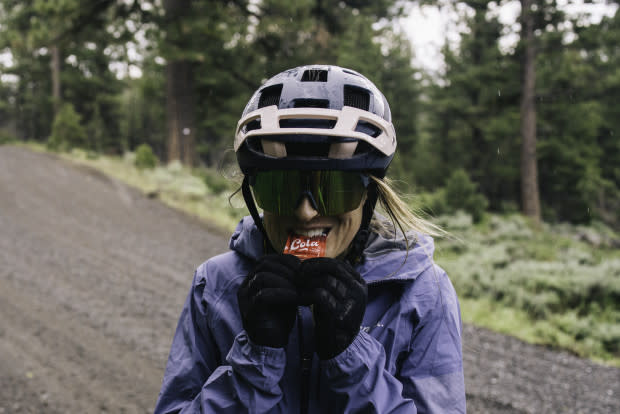
Andy Cochrane
With that in mind, when we stumbled upon the Oregon Timber Trail, it felt like Christmas morning. The self-appointed premier long-distance route in North America was, on paper, perfect for us. A nearly 700-mile route that stretched across our home state of Oregon, passing through a half dozen biomes, communities, and trail networks. Over 70 percent singletrack and notoriously remote, it was almost too good to be true. Our bike-obsessed brains needed no further info, not even the odds it would go sideways.
What Is the Oregon Timber Trail?
Starting in the south, the Oregon Timber Trail crosses basin and range country, the dry East Cascades, the lush and loamy West Cascades, and the Columbia Plateau. Developed a decade ago by a local non-profit, the route uses a mix of National Recreation Trails, forest roads, and regional mountain bike singletrack to weave its way from Lakeview to Chemult, Oakridge, and Sisters, before finishing in Hood River.
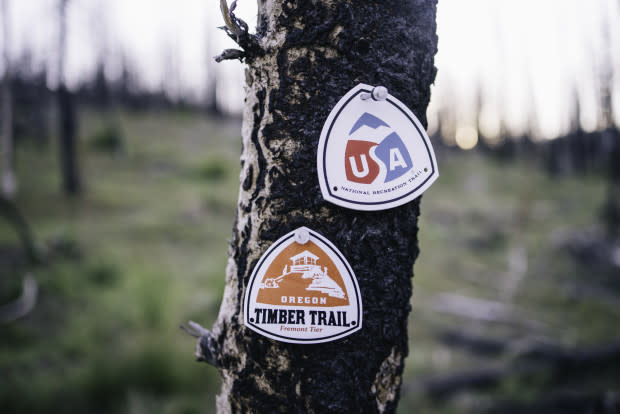
Andy Cochrane
While there's no official list, the Mount Rushmore of long-distance bikepacking trails is fairly set in my mind: the Great Divide, Arizona Trail, Colorado Trail, and Baja Divide. Cracking this pantheon feels near impossible; to even be in the same sentence as one you have to be truly unique and special. So, suffice to say, the “premier” headline of the Timber Trail set expectations sky high before we started pedaling.
At the same time, we knew the trip was going to be hard. We set out to ride the entire trail in 12 days, less than half the time most riders take. We expected a few mishaps, occasional reroutes, and a mechanical or two, but underestimated the biggest challenge: the trail itself. Due to historic wildfires in the last three years, the trail has changed dramatically, and not for the better.
Unfortunately, the website has not been updated accordingly. This information gap created huge problems for us. Below are the biggest lessons we took away from the trip, which will hopefully help you avoid similar trouble.
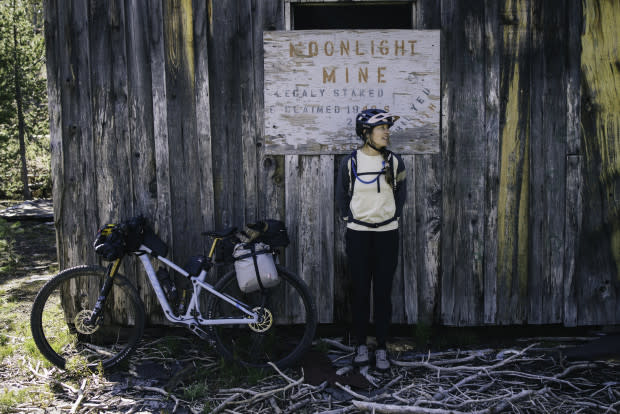
Andy Cochrane
Lesson 1: Do Your Homework
Words to the wise: always get local beta. Our biggest mistake happened before the trip even started. We were naively trustworthy of the route developers and didn’t check with enough local bike shops and riders for on-the-ground appraisals. A few phone calls in the weeks prior could have saved us days of reroutes. When we finally did call the local shop in Oakridge, the lady began audibly laughing (I kid you not), saying it was totally impassable due to hundreds of downed trees and fire debris.
Wildfire damage wasn’t an isolated issue confined to just one section of trail, either. The Freemont tier, or first 200 miles, has had five major fires since 2020, turning the large swaths of trail into sand and ash. Large parts of it are overgrown, eroded, covered in down trees, and quite challenging to follow, even with GPS. There are four large bypasses in this section, leaving little trail riding at all.
Make it through these (sometimes literal) hurdles and you’ll run into damage from last summer’s Cedar Creek fire, one of Oregon’s largest ever. Traverse through or take a bypass around and you’ll run into the Lionshead burn, which destroyed dozens of miles of trail near Mount Jefferson. As a whole, the revised route including bypasses is primarily forest road, with sparse singletrack. We were fortunate to have a backup plan in place before we departed, with maps downloaded offline, to keep us moving forward.
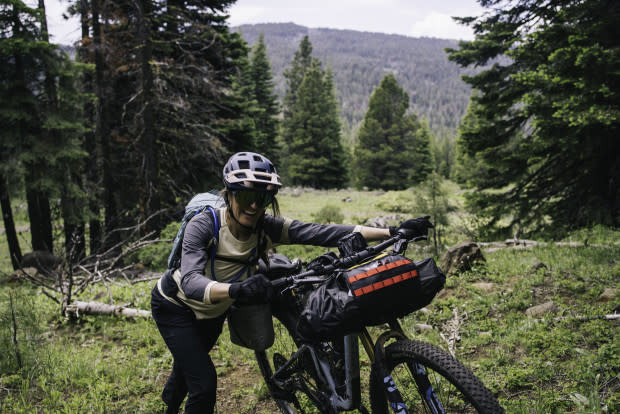
Andy Cochrane
Lesson 2: The Right Gear Is Everything
Men’s Journal aims to feature only the best products and services. We update when possible, but deals expire and prices can change. If you buy something via one of our links, we may earn a commission.
More than any other mode of backcountry travel, bikepacking is a game of ounces. I’m generally not a weight weenie, but I do believe in physics. Bikes handle differently with just a few extra pounds on them. If you load them with 30 pounds of food, camping supplies, clothes, and repair tools—which is surprisingly easy—they become unrecognizable. The entire game is about cutting weight, but safely.
The biggest decision is your bike. We opted for the new Pivot Mach 4SL, a lightweight XC steed that’s podium-level fast, while punching above its weight class downhill. For long-distance trips like ours, you have to make sacrifices. On a few descents we would have loved more travel and on some climbs we would have liked a hardtail, but overall it was the right pick.
We made a few tweaks to the components, including comfortable Power Pro Saddles and easy rolling Specialized Fast Trak 2Bliss tires, perfect for this bell-to-bell adventure. Not noticeable at first, they paid dividends in the long run, especially on long days.
Then came the kit build, including months of testing various setups. Ultimately we picked Tailfin Carbon Racks and Trunk top bags, allowing us to use our rear suspension and dropper posts, while carrying a larger load. The rest of our bags came from Revelate Designs: Sweetroll 11-Liter Handlebar Bag and a cockpit with a Magtank Top Tube Bag, Jerrycan Regular Bike Top Tube/Seatpost Bag, and two Mountain Feedbag ECOPAK EPX200 Handlebar Bags. Add in a custom Ranger Frame Bag and my personal favorite, Nano Panniers, and we had enough space for the requisite gear and food, without going overboard.
To increase our water capacity in long sections of desert, we brought along CamelBak MULE Hydration Pro Packs, which allowed us to carry over five liters, while still comfortable on our backs, day in and out.
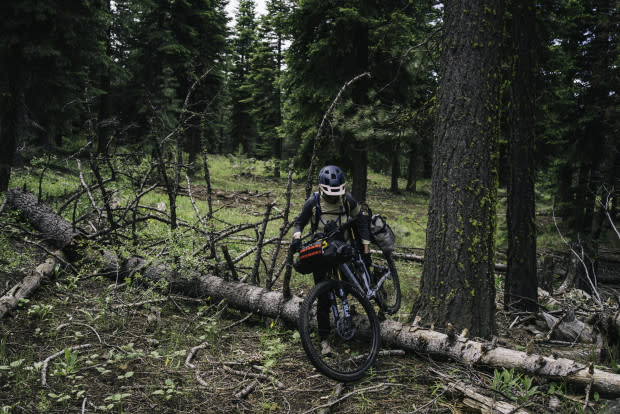
Andy Cochrane
We tried to keep everything else to a bare minimum, including just one change of clothes. This meant bringing stuff that we trusted, like Rapha’s Trail Infinium Jacket and Explore Hooded Down Jacket, along with other pieces from their reliable Explore collection. Even with a mix of rain, extreme heat, and a few cool nights, we never had a major issue. We paired this kit with Specialized 2FO ClipLite Shoes that ride well, are great for in-camp use, and quite handy for long hike-a-bikes. Overall, there's almost nothing I would change about our clothing, which we washed in a river every few days.
For safety, we wore Smith Forefront Helmets and Shift Split Mag Sunglasses, giving us MIPS protection with impressive breathability, useful on the long, sweaty climbs. In camp, we lived in Nemo's Hornet Osmo Tent, Kayu Down Sleeping Bags, and Tensor Sleeping Pads, all incredibly light pieces of gear that are ideal for any kind of fast and light trip, especially bikepacking adventures like ours.
The final piece—and perhaps one of the most important—was a Garmin Edge 1040 Solar Computer, that ran in battery save mode for over 40 hours, while giving us reliable directions on a trail that barely exists.
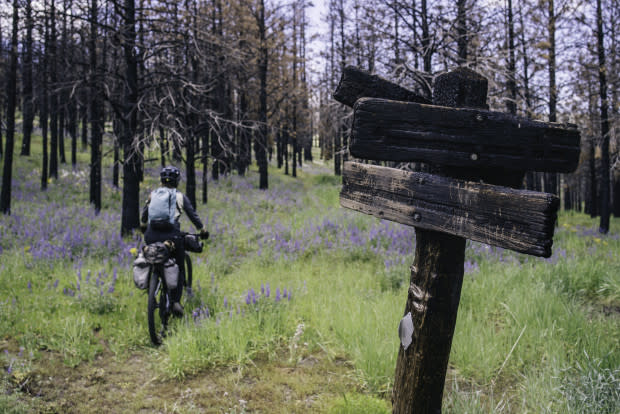
Andy Cochrane
Lesson 3: Sometimes You Gotta Let Go
Jenny and I went into the trip expecting your standard backcountry hardships: hot days with no showers, sore muscles, occasional bad nights of sleep, bug bites, bushwhacking, and a possible fall or two. We’ve done some big trips together before, including high-altitude ski mountaineering, scuba diving, dog sledding, and plenty of international travel, but this ranks as the most challenging by a healthy margin.
The Timber Trail is remote and requires considerable self-sufficiency and safe decision-making, but that's old hat to us. Our challenge wasn’t related to bike skills, backcountry skills, or gritting our teeth even harder. Much the opposite, actually. Our biggest emotional lesson was about letting go.
As presently constructed, the Timber Trail is a cocktail of challenges, rarely allowing any flow to the riding. At times you're moving at a turtle’s pace, lifting bikes over logs or pushing them up ashy slopes.
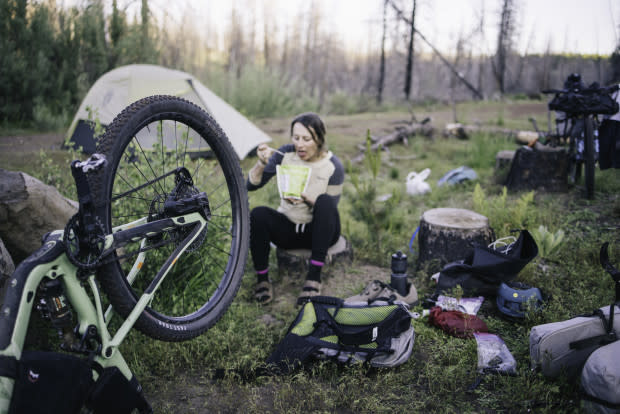
Andy Cochrane
At times, you’re backtracking, bushwacking, or just sitting in the grass wondering how in the hell you got there. To get through all these moments, you have to be able to let your expectations evolve. Riding the trail end-to-end was our big goal of the year. Something we spent months planning and preparing for, testing gear, training for, and taking time off work—and quite frankly, it wasn’t possible even before we started.
What we learned from this was important: The real value in long days and big goals is never about the finish. It’s just about how you handle adversity and making sure to enjoy quality time together.
